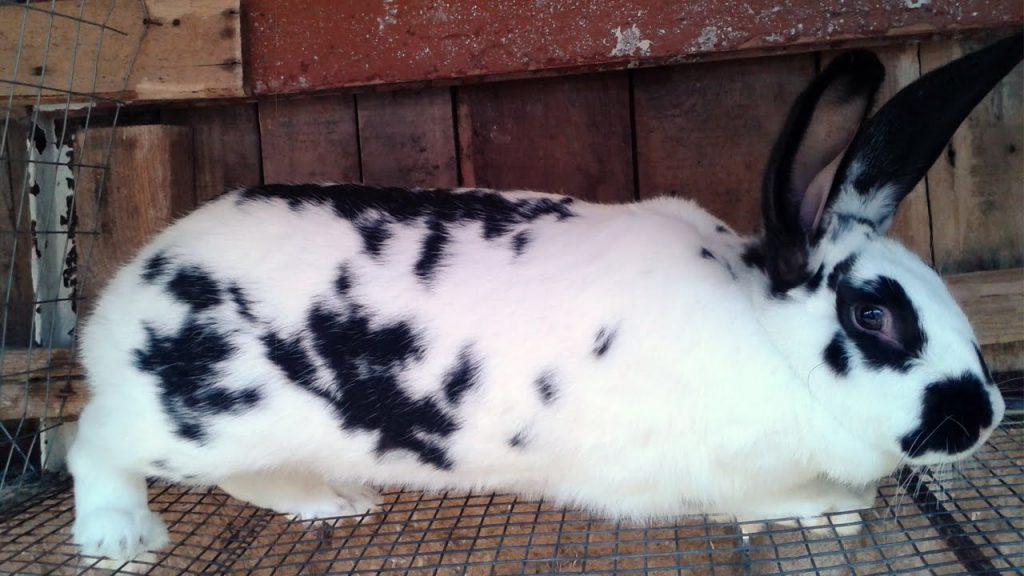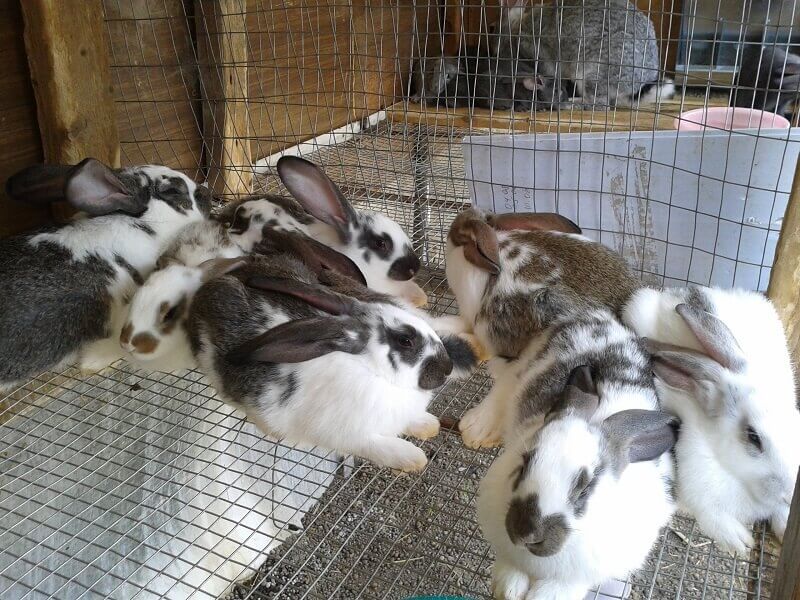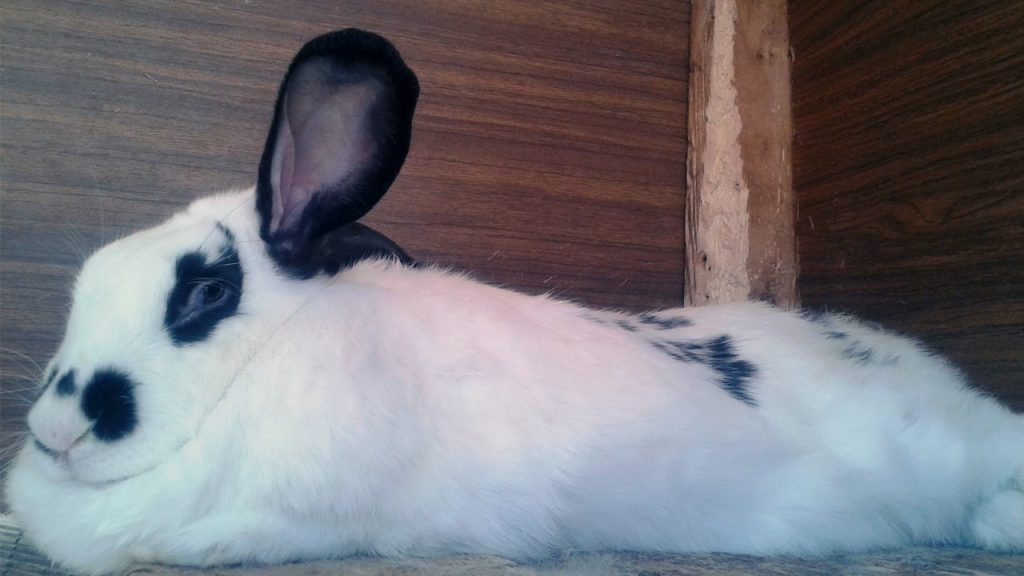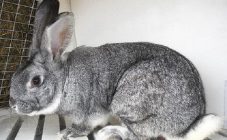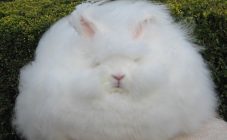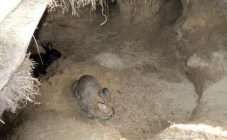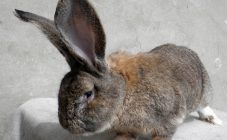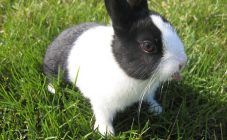Content:
From a huge variety of breeds, the Butterfly rabbit is distinguished by its unusual fur color and juicy meat. Therefore, it is often used for home breeding in rabbit breeders.
The origin of the breed and possible varieties
Rabbits of the Butterfly breed were bred in 1887. At first they were raised as ornamental animals. Weight reached no more than 2 kg. Later, breeders began to cross breeds with others, this species turned into a meat-skin species and now easily reaches a weight of 5 kg. The animals are named so because the pattern located throughout the body looks like the wings of a butterfly.
The breed has the following varieties:
- Dwarf butterfly. Smallest species. Can be grown as an ornamental animal.
- Motley giant... The largest animal of this species. Suitable for farming.
- Rhine rabbit. Differs in a kind character.
- English Butterfly. He has a cheerful character, very quick-witted.
- Czech Butterfly. Differs in medium size.
Characteristics and features of the breed
Description of the breed and characteristics of the Butterfly rabbit:
- The animals are white. The nose, ears, fur around the eyes are black.
- On the back there is a dark stripe, on the sides there are small specks. The spots can be black, blue and gray, but should not merge with each other.
- The figure is located symmetrically in the direction of the rabbit's body.
- Animals have a medium-sized head and chest. In females, the muzzle is slightly elongated. The length of the body can vary from 50 cm to 65 cm. The paws are muscular, large and straight. The fur is soft, even, of medium density.
Females are usually smaller than males. Life expectancy is about 5 years. It is not easy to meet a purebred rabbit of this breed.
To choose a thoroughbred rabbit, you need to look at the following parameters:
- Continuous piping around the eyes, which should not merge with the pattern on the nose, cheeks and ears;
- dark coloration of the ears;
- butterfly pattern on the nose;
- small head size;
- wide dark stripe along the back;
- symmetrical spots on the sides and cheeks;
- lighter color of the lower part of the tail and legs;
- in rabbits - dark edging of the nipples.
Females are very fertile and high-milk, give birth to 6 to 8 rabbits. They have a well-developed maternal instinct, therefore, there is good survival among the rabbits. They get a large offspring per year.
Features of maintenance, care and feeding
The Butterfly breed is unpretentious in terms of living and feeding, therefore it is an excellent breeding option. The rabbit is able to quickly adapt to any living conditions. They can live in cages, aviaries, open pens. Cellular living is best. The only requirement is the absence of drafts. If rabbits live in the open air all year round, their immunity to various diseases is enhanced. Like all breeds, Butterflies quickly enter a certain diet, so the procedure for feeding the animal is carried out at the same time.
Basic feeding rules:
- Constant presence of drinking water. If dry food predominates in the diet, then more water is required.
- The presence of natural solid foods in the diet - apples, carrots, branches of fruit trees.
- Eliminate rotten and spoiled foods.
- Adding vitamin and mineral complexes to the main feed.
- The frequency of feeding is at least 2 times a day.
- The new product is introduced gradually in small portions.
The daily rabbit diet includes:
- green plants - nettle, plantain, clover;
- hard raw vegetables, root vegetables;
- tops;
- branches of fruit trees;
- sprouted grain;
- compound feed;
- hay.
This is due to the high propensity of animals to infectious diseases. The most common and dangerous diseases among rabbits are HBV and myxomatosis. Vaccination is carried out on the 45th day of the rabbit's life and the procedure is repeated every 2 weeks. Further, rabbits are vaccinated every year or six months with a complex-spectrum vaccine.
Breeding rabbits at home
Mating rabbits can be started from the age of 4-5 months. But males must be older. Immediately after mating, the animals are separated. Pregnant rabbits are kept in special cages equipped with queen cells. Pregnancy lasts 30 to 32 days. By the beginning of the raising process, the rabbit begins to build a nest, using straw, hay and down for this. With good feeding, rabbits gain weight quickly. By the time they are 30 days old, they are given adult food. Until this age, they feed exclusively on mother's milk. As soon as the rabbits reach the age of 1.5 months, they are immediately removed from the mother.
Rabbit Breeding Secrets:
- You can not cross the Butterfly rabbit with representatives of other breeds. This will negatively affect the quality of the fur and the taste of the meat.
- Inexperienced young rabbits scatter cubs around the cage, and sometimes even eat them. Therefore, after the birth, you need to carefully watch the female. If this happens, you need to rub your hands with fluff from the cage, collect young rabbits and put them back in the nest.
- Transferring young rabbits to a regular diet should be done with caution, gradually introducing new foods for them. The food offered must have a delicate texture.
Breed advantages and disadvantages
Pros of the breed:
- Good adaptation, acclimatization to weather conditions.
- Possibility of keeping both decorative.
- Undemanding food.
- Delicious meat.
- Affectionate, kind, smart.
Cons of the breed:
- Deterioration in the quality of fur and meat when crossed with other breeds.
- High probability of diseases associated with the organs of vision and respiration.
- Young mothers can eat their young.
Rabbits of the Butterfly breed are ideal for breeding in private and subsidiary farms. On large farms, large-breed rabbits are used for breeding.
